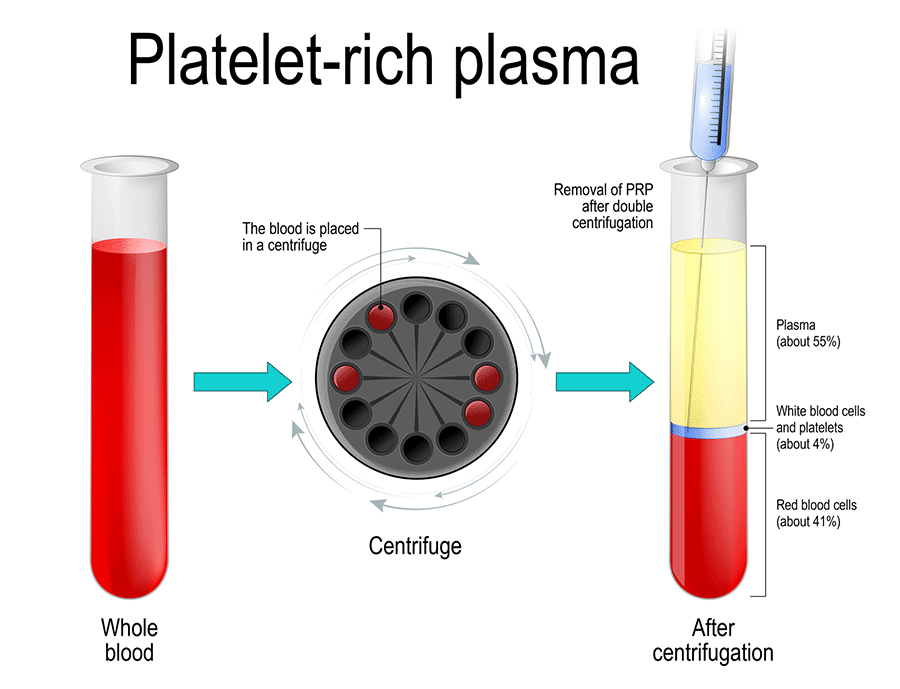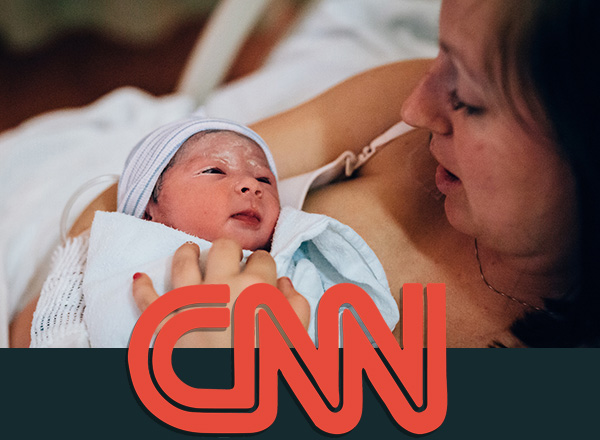PRP Ovarian Rejuvenation
Ovarian rejuvenation treatments are the most innovative proposed therapy available for women who face the following fertility problems and wish to have their own biological child without the use of donor eggs:
- are approaching or entering menopause
- have signs of early menopause
- have ovarian failure
The EmBIO Assisted Reproduction Centre is one of the first centres in Europe to offer PRP ovarian rejuvenation therapy.
Does PRP treatment for ovarian rejuvenation have the same effect on all women?
Every woman's body and organism differs, therefore, not all women respond to the implementation of PRP treatment with the same result. In many cases, with the use of PRP treatment, menopause is temporarily reversed or the number of eggs is increased.

Thus, we are in the position to offer the possibility of childbearing to women who stood no chance of having their own biological children.
With these treatments, women can in fact get pregnant even with their own eggs and in a completely natural way.
Or the eggs can be collected for in vitro fertilization treatment so that women with ovarian failure do not need to use donor eggs.
Free Online Consultation with Dr Thanos Paraschos and his team
How PRP treatment is performed at EmBIO
The ovaries rejuvenation treatment is based on the direct injecting of specially treated blood plasma into the ovaries. The platelet-rich plasma is a new technology that has made significant clinical progress in the medical field and can be used for various types of medical treatments such as in gynecology for vaginal rejuvenation, orthopedics (problems in the ligaments, muscles, joints, etc.), to accelerate the healing of injury, or even to treat hair loss in men.
It is completely safe since the blood is obtained from the same individual, hence, free from concerns over transmittable diseases or allergic reactions.

PRP therapy procedure step-by-step
1
PRP therapy begins with blood collection so as to acquire a very small amount of blood.
The blood is then processed in the laboratory by centrifugation to separate the plasma and platelets from the red blood cells.
At the end of the process, the centrifuged platelet-rich plasma is ready to be administered into the patient’s ovaries.
2
Performed under light anaesthesia (sedation), the PRP is inserted into the ovaries through the vagina with a nonsurgical, transvaginal ultrasound-guided injection.
3
The patient then stays in the recovery care unit for about an hour until the effects of intoxication wear off.
She can return to work the next day, without any special precautions.
A light painkiller is recommended for the first few hours post-treatment, and antibiotics for a few days.
How do we check if the therapy was effective?
The first indication of successful therapy is menstruation returns to normal, that is if it was initially interrupted due to menopause. It usually requires a few months to notice this.
Another sign of successful therapy is that there is:
- an increase in AMH hormone levels
- a decrease in the levels of FSH and LH hormones which are the hormones that negatively affect fertility
The third sign is the increase in the number of eggs that can be detected by monthly ultrasound check-ups.
FSH, LH, and AMH levels as well as ultrasound checks should be repeated every month for about 3 months.
What are the success rates of this treatment?
With a careful selection of cases, PRP method offers ovarian rejuvenation in 75% of the patients.
This does not mean that pregnancy will occur with or without IVF at the same rate. The method has been used for a very short time in different centres and statistics vary.
At EmBIO, however, pregnancy rates are close to 50% after PRP.
How Eugenia became pregnant after PRP
"I was around 37 when my partner and I were trying to conceive naturally without success for over 6 months, so we decided to get some tests done. The tests were not good as it seemed that my body was heading into premature menopause and my AMH (egg reserve) was very low.
"I was very relieved when the team at EmBIO offered me treatments that would give me a chance to have a child with my own eggs rather than donor eggs. At first, I was hesitant about stem cell therapies, but when 6 eggs were found and were successfully fertilized by the first IVF cycle, I could not believe my luck.
"Five days later we ended up with three embryos out of the six fertilised eggs - one for transfer and two for freezing. I am pregnant as we speak, the pregnancy is going well, and I have two more embryos for future use in the case that I want to have another child.
Eugenia D.
Corinth
Book a Free Online Consultation with Dr Thanos Paraschos and his team
Other ways of treatment with PRP
- Ovarian regeneration with stem cells
-
Stem cell therapies have exhibited considerable success in the field of regenerative medicine over the last two decades. Stem cells stand out for their ability to evolve into other cell types. Moreover, in a number of tissues, they act as a type of an internal repair system, in that they constantly keep dividing so they can replace other types of cells which have begun to decline. Based on this property, they can be used for infertility treatments, and more specifically, in cases of ovarian failure with the aim of ovarian rejuvenation therapy.
Fertility treatment, in this case, is performed with an injection of plasma enriched with these cells. The target is to activate stem cells that, with sufficient biological stimulation, they can become cells with ovarian functions.
In the most advanced version of this therapy, with the administration of drugs that mobilise bone marrow stem cells, they increase their concentration in the peripheral blood and produce growth factors enabling us to restore the natural process involved in strengthening the ovaries and recover their function.
- Ovarian rejuvenation with the use of ovarian tissue
-
Inside every woman’s ovaries, there is a reserve of eggs. It’s a bank of eggs that she carries from the moment of birth and contains primordial follicles commonly known as the “silent” follicles. Every woman is born carrying many millions of these silent follicles. Each month, about a thousand of these follicles are activated and mature following all the stages of follicle growth. However, only one or two manage to reach the end of the process and mature as eggs suitable for fertilisation, while all the rest disappear.
As a woman gets older and approaches menopause, the activation of the follicles decreases. However, science has recently discovered that these follicles can be reactivated and grow when tissue is sampled from the ovaries:
With this process, the silent follicles are reactivated so that they are able to grow and mature into follicles that will release new eggs.
The procedure, therefore, contributes to the activation of the follicles reintroducing ovarian tissue previously extracted by laparoscopy and specially processed in the lab. The procedure involves a simple surgical procedure that is painless and allows the woman to return to her daily routine the same day.
Ovarian rejuvenation treatments with PRP are, in any case, an important alternative to ensure a woman prolongs her fertility and the possibility of having her own biological children at an increasingly older age.

